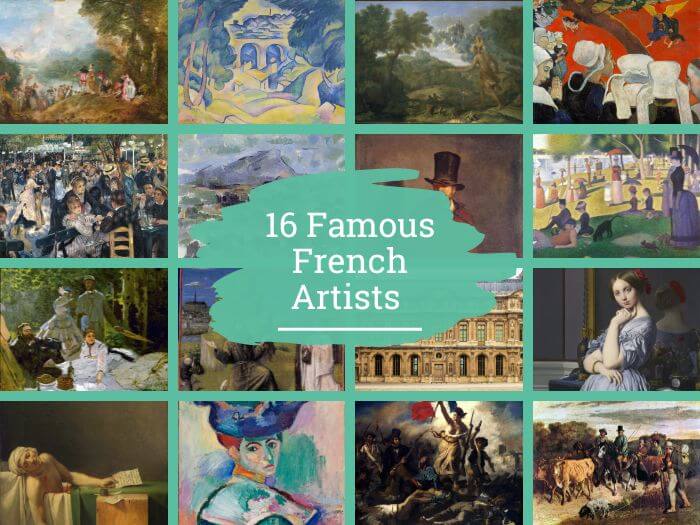France has a rich artistic tradition and sits comfortably alongside the countries that are considered to have made the most important contributions to the world of art.
Since the Middle Ages, many artistic innovations have occurred in France. And many of the major artistic schools have either arisen or been developed there.
Behind this have always been the artists driving this creativity and pushing forward new ideas. And in this post, I list 16 of the most famous French artists of the last 500 years or so to give you a broad introduction to French art.
Pro Tip
By the way, if you want to learn French fast and have fun, my top recommendation is French Uncovered which teaches you through StoryLearning®.
With French Uncovered, you’ll use my unique StoryLearning® method to learn French through story…not rules. It’s as fun as it is effective. If you’re ready to get started, click here for a 7-day FREE trial.
Table of Contents
1. Jean Fouquet (1420-1481)
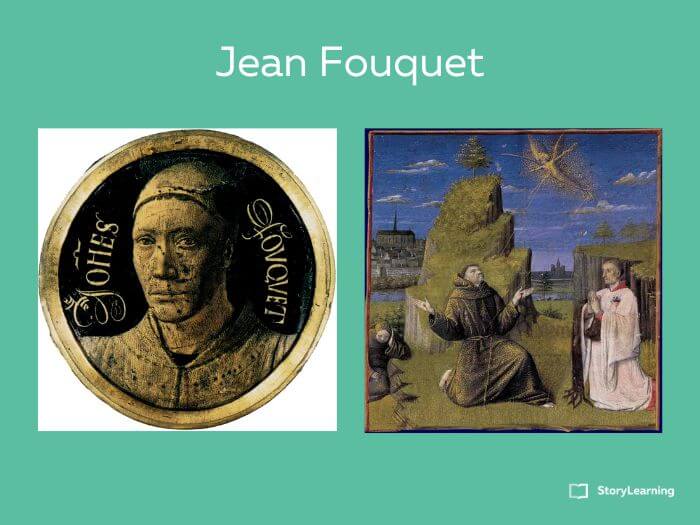
One of the most important early famous French artists was Jean Fouquet, a man who was active at the time when the Gothic period was giving way to the Renaissance.
It's thought that he was among the first Frenchmen who travelled to Renaissance Italy to learn from the developments in art that were underway there, probably sometime around 1445-47.
On his return to France, he began incorporating the new ideas he had picked up in Italy into his more traditionally French style. And the outstanding quality of work he produced saw him employed at court by Charles VII.
After the death of Charles VII, he was then made official court painter by Louis IX.
He was known for his immense skill as a manuscript illuminator, one of the most important art forms at the time. His work was noted for its precision and fine detail, and he was counted among the foremost artists of his day in this field.
He was equally accomplished in panel painting, and he is also attributed with the invention of the miniature portrait, an art form that incorporated many of the same techniques used in manuscript illumination that became popular in 16th-century France and England.
Among his most famous and important works are the Melun Diptych and his self-portrait in miniature, the earliest known miniature self-portrait and possibly the first-ever formal self-portrait. This self-portrait would originally have been hung on the frame of the diptych.
He was also responsible for a large volume of illuminations along with paintings of the French court and portraits of courtiers and royalty.
2. Pierre Lescot 1515-1578
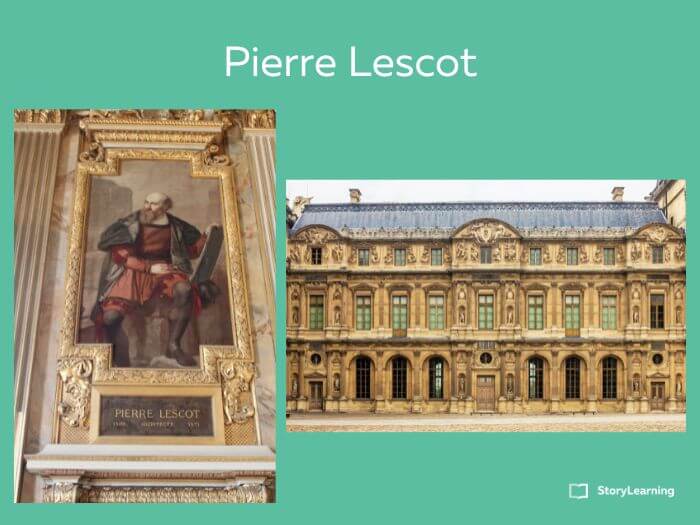
In a list dominated by painters, I wanted to include at least one architect – and Pierre Lescot is the one I’ve chosen.
If you’ve visited the Louvre in Paris, you will almost certainly have seen his work – even if you weren’t aware of it at the time – since he was responsible for constructing the oldest preserved above-ground structure of the modern-day Louvre Palace.
Lescot was appointed by Francis I to convert an existing chateau into a luxurious palace, a project he oversaw until the death of the king. He then retained this role on the accession of Francis’ successor, Henry II.
Only the western portion and part of the southern portion of Lescot’s plan were completed during his lifetime. These sections now form the southwestern part of the Cour Carré – and as a result, this is now referred to as the Lescot Wing.
The construction, inspired by Italian Mannerism, is considered important in the development of French Renaissance architecture since it heavily influenced later works in similar styles.
Although redeveloping the Louvre Palace was his life’s work, Lescot was also responsible for several other previous constructions.
He is also known for the Fontaine de nymphs, later renamed the Fontaine des innocents, a monumental fountain built in 1549 that can be seen in Place Joachim-du-Bellay in Paris’ 1st Arrondissement.
3. Nicolas Poussin (1594-1665)
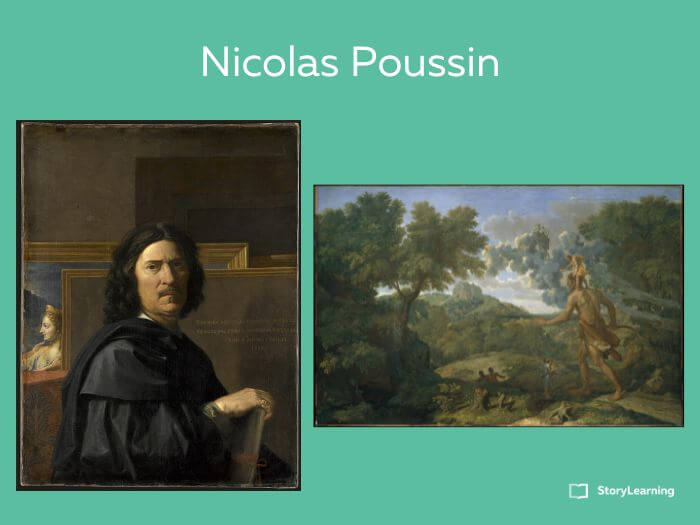
Nicolas Poussin was among the most important of the French Baroque artists. He was born in Normandy, but his appreciation of Italian art saw him spend most of his career in Rome – other than a brief stint back in Paris as First Painter to Louis XIII.
In Italy, much of his output centred on religious and mythological themes. And later, he gave much importance to the landscapes that appeared in his works.
He had a great influence on many later painters, including Jacques-Louis David, Jean-Auguste-Dominique Ingres and Paul Cézanne, all artists who also feature on this list.
Discussion of his work contrasted his style with that of his contemporary, the great Dutch master Rubens.
While Rubens placed great emphasis on colour, producing a dramatic effect full of movement and emotion, Poussin maintained that drawing should remain the foundation of painting, and his works were characterised by logic, discipline and clarity.
Among his most famous and important paintings were Orion Blinded Searching for the Sun, Landscape with Hercules and Cacus and The Four Seasons paintings, all of which were completed in the final years of his life.
4. Antoine Watteau (1684-1721)
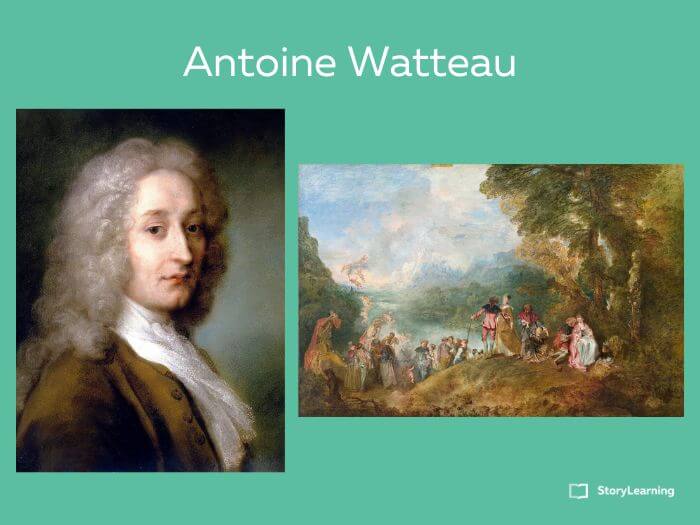
Baroque art developed as a response to the artificial qualities of High Renaissance Mannerist compositions, instead, emphasising contrast, colour and movement.
However, by the time of Watteau, its popularity was waning due to its reliance on classical forms and the kind of discipline exemplified by the likes of Poussin.
Watteau’s work, by contrast, sought to insert more naturalism into the Baroque style, and as a result – and influenced by the work of Rubens – he was at the forefront of the movement that saw Baroque develop into Rococo, also known as rocaille in France.
Rubens’ influence can be detected in works such as The Departing Regiment and other subsequent paintings on military themes.
Later in his career, having failed to gain acceptance into the Academy of Rome, he applied to the Academy of France. At the time, no category existed that described his works, so rather than reject him, the Academy created a new one, the fête galante.
These paintings depicted idyllic countryside scenes featuring various characters in jovial attire enjoying themselves in outdoor settings.
In 1717, five years after being admitted to the Academy, Watteau produced the reception piece that was required for him to gain full membership.
The piece is known as Pilgrimage to Cythera – or Embarkation for Cythera – and is considered one of his masterpieces as well as being one of the finest examples of the fête galante genre.
5. Jacques-Louis David (1748-1825)
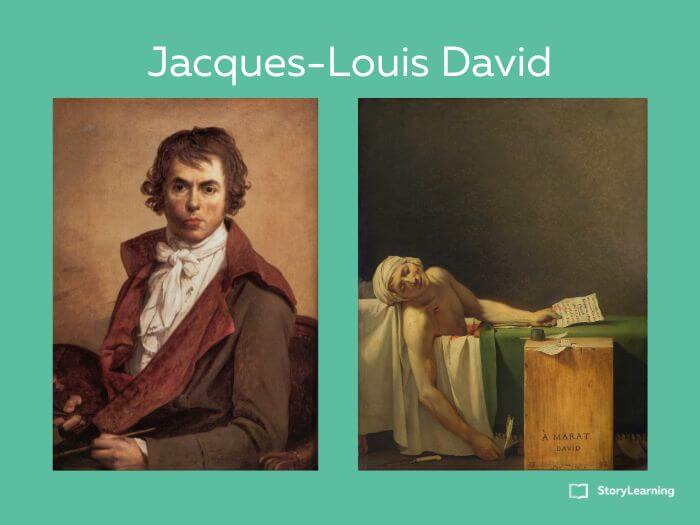
As the 18th century drew to an end and the 19th century rolled in, the art world began to reject the exuberance of the Rococo period, which was replaced by the more regimented sternness of Neoclassicism.
Among the leading proponents of the Neoclassical movement was Jacques-Louis David, an artist who was active in the years leading up to and following the French Revolution of 1789.
David studied under François Boucher, one of the preeminent Rococo painters of the day.
However, in line with the changing values of the time, his art became more formally classical, incorporating elements of a style that had been out of fashion since the Renaissance.
As a result, Boucher sent him to work under Joseph-Marie Vien, a painter who was at the forefront of the classical revival.
During this time, he attempted to win the Prix de Rome, a competition that granted the successful painter a scholarship in Rome – a prize he finally claimed at the fourth time of trying.
While in Rome, he was able to view the works of Nicolas Poussin, one of his great influences, as well as works by Italian artists such as Caravaggio and the Carracci family.
In the years that followed, he went on to produce notable paintings including the Oath of the Horatii and the Death of Socrates.
A friend of Robespierre, David was actively involved in the events surrounding the French Revolution, events he attempted to capture in pieces such as the famous incomplete painting The Oath of the Tennis Court.
Perhaps David’s finest and most renowned work is the Death of Marat, a painting that commemorated the assassination of his friend, Jean-Paul Marat, a revolutionary leader who was stabbed to death in 1793.
6. Jean-Auguste-Dominique Ingres (1780-1867)

Another of France’s most famous Neoclassical painters, Ingres was influenced by Nicolas Poussin as well as by Jacques-Louis David, under whom he studied. With his output, he sought to defend the Neoclassical style against the growing popularity of Romanticism.
Following in the footsteps of his mentor, Ingres was awarded the Prix de Rome – and mirroring David’s experiences in Rome, his exposure to the great Renaissance works in the Italian capital would influence the rest of his artistic career.
He believed strongly in the importance of drawing, considering colour to be of only secondary importance and merely ornamental. And with the works he produced, he established himself as the leading Neoclassical painter of his day.
Ironically, although Ingres valued historical paintings most highly, he is now remembered more for the collection of exceptional portraits he produced.
He was also responsible for a number of high-quality drawings, something that’s hardly surprising due to the importance he placed on this aspect of his painting.
7. Eugène Delacroix (1798-1863)
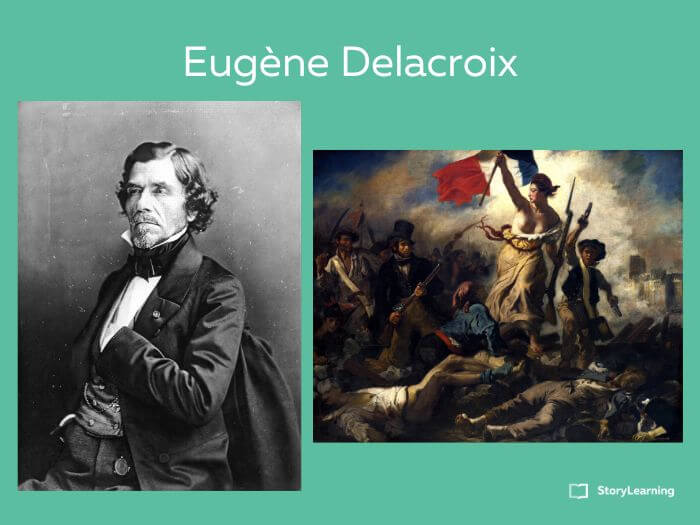
While Ingres spent his life championing the Neoclassical style, his contemporary Eugène Delacroix was pushing the competing Romantic movement that focused on subjectivity, imagination, passion, intuition and the wonder of the natural world.
While Ingres took inspiration from Poussin and his strict adherence to form, Delacroix preferred the more free-flowing art of Rubens. Contrary to the ideas of Ingres, he placed greater importance on the role of colour – although drawing also remained central to his art.
Delacroix was prolific during his career, producing over 800 paintings along with over 1,500 pastels and watercolours and thousands of drawings and sketches.
His most important work was Liberty Leading the People, which is currently housed in the Louvre in Paris.
The painting depicts the goddess Liberty wearing a Phrygian cap and holding aloft the French tricolore. In both subject matter and execution, this work exemplifies the differences between the Neoclassical and Romantic styles.
Delacroix’s works also feature a wide range of other subjects, including current events in the Massacre at Chios, scenes from his travels in North Africa, religious themes, individuals and animals.
8. Gustave Courbet (1819-1877)
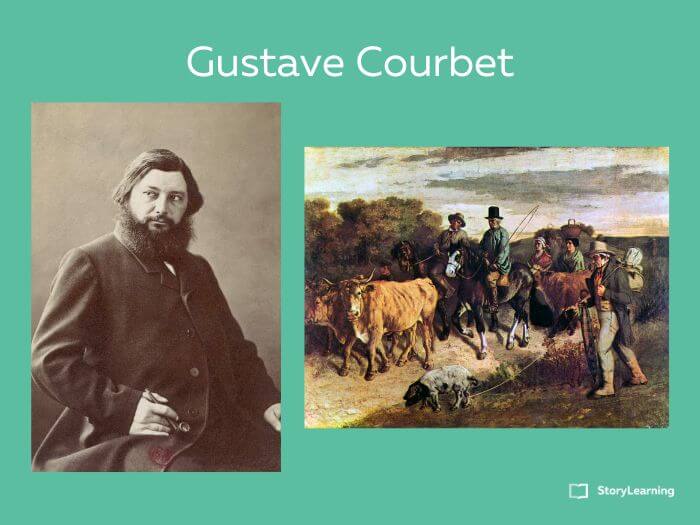
With each new generation of artists seems to come the rejection of the ideals of previous schools and the development of new ideas and styles.
And just as the Romanticists rejected the work of the Neoclassicists, so the Realists came to question the views of the Romanticists.
The Realist movement was led by Gustave Courbet, an artist from the east of France.
In his work, rather than choosing to depict momentous events from the past, he sought to focus on scenes from daily life that he himself could experience. In his view, it was impossible for living artists to realistically recreate scenes they had not witnessed themselves.
Among his most renowned works – and works that demonstrate these ideals most vividly – are paintings such as The Stone Breakers, The Peasants at Flagey and A Burial at Ornans, all scenes that would have been seen as unworthy of attention in the past.
His choice of subject matter earnt him a certain notoriety within the art world during his lifetime, and this uncouth reputation was something he actively cultivated.
In some of his later works, it seems that he deliberately chose to create art that was likely to incite outrage, including explicitly erotic nudes and depictions of prostitutes.
Indeed, his Origin of the World was deemed so offensive that it wasn’t publicly displayed until over a hundred years after its completion.
9. Édouard Manet (1832-1883)
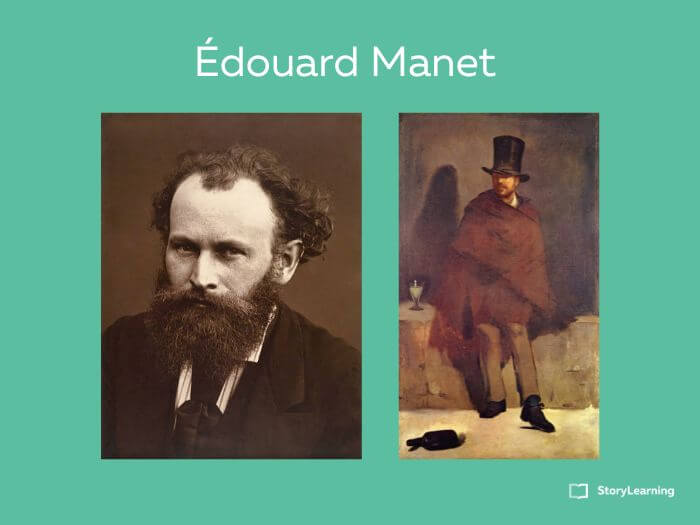
Manet is one of the key figures credited with taking Realism and moving it towards the beginnings of Impressionism – which was then fully developed by Claude Monet and others.
Taking his lead from Courbet, he painted subjects such as beggars, gypsies and bullfights. His first major painting was entitled The Absinthe Drinker, which he completed between 1858 and 1859.
He loved to paint outdoor scenes from daily life in Paris, as is exemplified by his painting Music in the Tuileries. He also painted many café scenes, depicting people going about their daily lives in the capital.
Manet died at the age of 51 from complications related to syphilis. However, during his relatively short career, he made a major contribution to the development of the art of the day and paved the way for many of the more innovative styles that would follow.
10. Claude Monet (1840-1926)
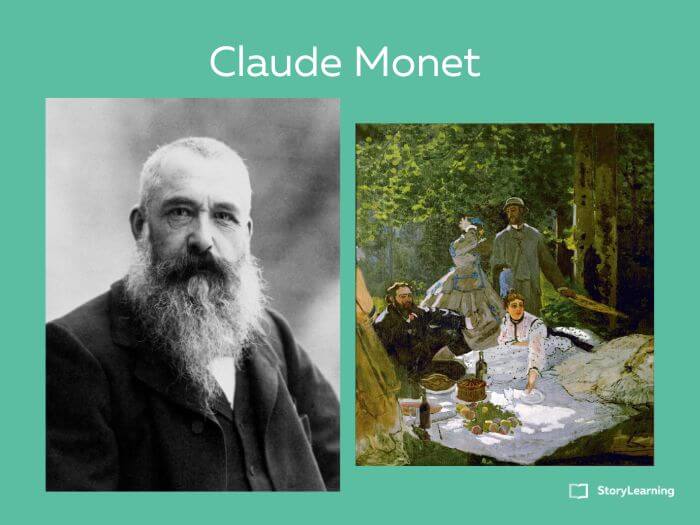
Among the most famous and most beloved of all famous French artists – and whose works are among the most easily recognisable – Claude Monet is known as the founder of Impressionism.
The Impressionists sought to depict the effects of light using delicate yet visible brush strokes, taking their inspiration from the work of earlier French artists such as Delacroix as well as the likes of Constable and Turner in England.
Monet’s early efforts received little attention, but his later paintings began to be noticed – although perhaps not in the way he might have liked since they drew the ire of art critics at the time. Clearly, the art world of the day was not ready for his groundbreaking style.
When he found that his work was not receiving the recognition he felt it deserved, he organised an exhibition of his own with a group of artists that included Pierre-Auguste Renoir and Paul Cézanne, among others.
His group was originally known as the Anonymous Society of Painters, Sculptors and Engravers. But one of the paintings he displayed, Impression, Sunrise gave the group the name we know them by today – the Impressionists.
Inspired by the subject matter of Manet, who was still active during the earlier part of his career, Monet excelled above all in landscape paintings – although this was far from the only genre he chose to paint.
Among his many famous paintings, outstanding examples include Water Lilies and the Japanese Bridge, Water Lilies and The Cliffs at Étretat – the kind of paintings you would recognise even if you had very little knowledge of art.
11. Georges Seurat (1859-1891)
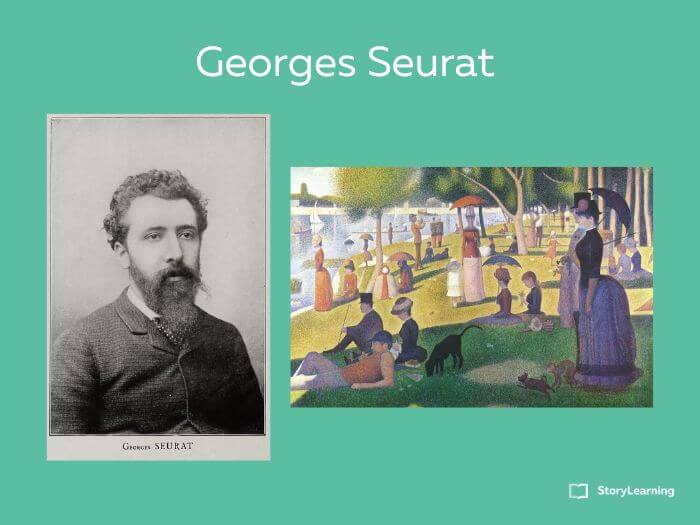
Georges Seurat was a post-Impressionist painter who, despite a career that was cut short by an early death, had a considerable impact on the subsequent direction of modern art.
As a developing artist, Seurat studied under Henri Lehmann who had been, in turn, a student of the great Neoclassical painter Ingres.
Despite his Neoclassical training, Seurat developed a keen interest in contrast and colour. And he was also highly influenced by the work of Delacroix, the Romantic artist who had been a contemporary and main opponent of Ingres.
These interests, coupled with the developments being made in the scientific understanding of the perception of colour, led him to develop pointillism, a technique that makes use of dots of paint on the canvas that the viewer’s eye then naturally blends into shapes.
This technique was employed to full effect in his groundbreaking work A Sunday Afternoon on the Island of La Grande Jatte, a piece that took him two years to complete.
Unfortunately, Seurat died at the age of only 31, but even at that young age, he had already left an indelible mark on the world of art, and his impact would be felt for years to come.
12. Paul Cézanne (1839-1906)
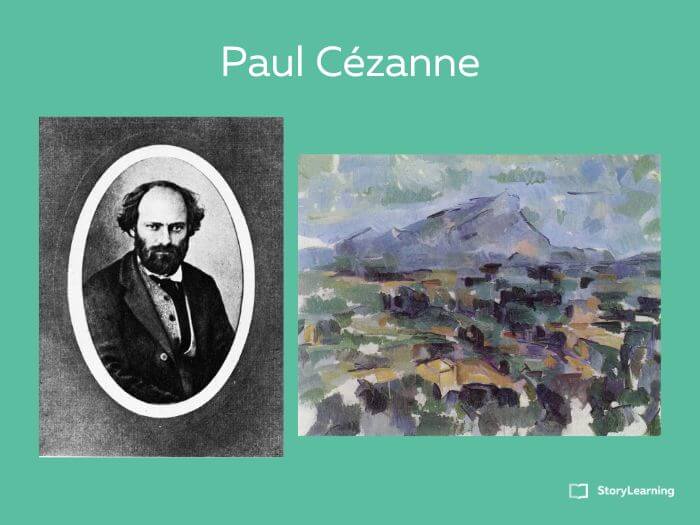
Although he met with rejection and sometimes even ridicule during the early part of his career, Cézanne went on to become one of the most influential artists of the 19th and early 20th centuries.
His work helped spawn the later Cubism movement, and artists such as Pablo Picasso and Henri Matisse cited him as being among their greatest inspirations.
Several times, Cézanne’s work was refused by the prestigious Salon exhibition in Paris.
However, his work was eventually shown in the Salon des Refusés (Salon of the Refused), an alternative exhibition set up alongside the official Salon that also exhibited works by Monet, Manet and Camille Pissarro.
Cézanne also displayed work in the first exhibition set up by Monet. But even among this group of avant-garde artists, he was seen as something of an oddball and outsider.
Nevertheless, his determination and refusal to compromise with his art saw his work eventually receive the recognition it deserved, and he is now counted among the greatest of all famous French artists.
13. Pierre-Auguste Renoir (1841-1919)
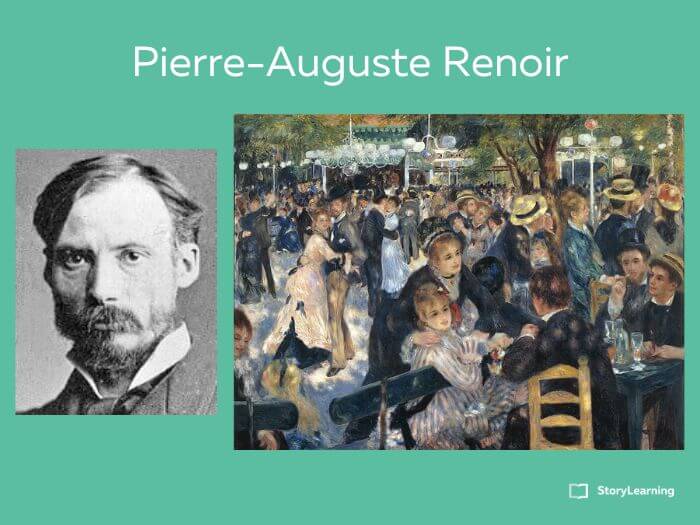
A contemporary of Manet, Monet and Cézanne, Renoir was another painter at the forefront of the Impressionism movement.
His style reflects his interest in light and the importance he placed on colour. Perhaps unsurprisingly, Delacroix was one of his main influences, and he also appreciated the Realist work of Courbet.
Many of his paintings are of female nudes, and he spent much time trying to capture the beauty and essence of the female form.
His style changed constantly throughout his career. Early on, his works were overtly Impressionist, and his Dance at Le Moulin de la Galette is among the best examples of this phase.
Following this, he sought to paint in a more Classicist style before returning to something closer to Impressionism again toward the end of his life.
14. Paul Gauguin (1848-1903)
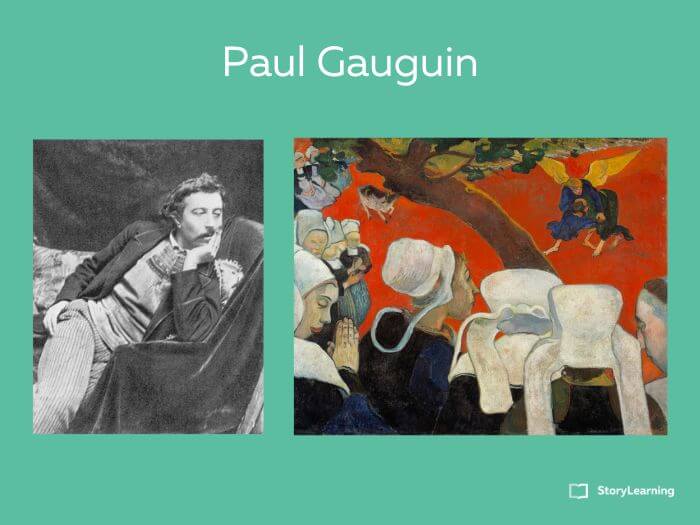
Paul Gaugin was a largely self-taught artist whose life was often as colourful as his paintings.
Although born in France, he spent his childhood in Peru where his family sought refuge from the wave of revolutions that was washing across Europe at the time.
His family then returned to France due to a lack of funds, and he began working while practising art in his spare time.
He formed a friendship with Impressionist painter Camille Pissarro and later showed paintings in Impressionist exhibitions.
However, he later on began to develop a style of his own and is now regarded primarily as a post-Impressionist and Symbolist due to his experimental use of colour and his so-called Synthetist technique.
During his life, he also spent time in Tahiti (where he married three local girls and fathered children by them) and Martinique. And his vivid paintings inspired by his time away from France are among his most distinctive and memorable.
The use of bright colours in Gauguin’s Tahiti paintings in particular would also significantly influence the Fauvist movement that appeared in the first decade of the 20th century.
15. Henri Matisse (1869-1954)
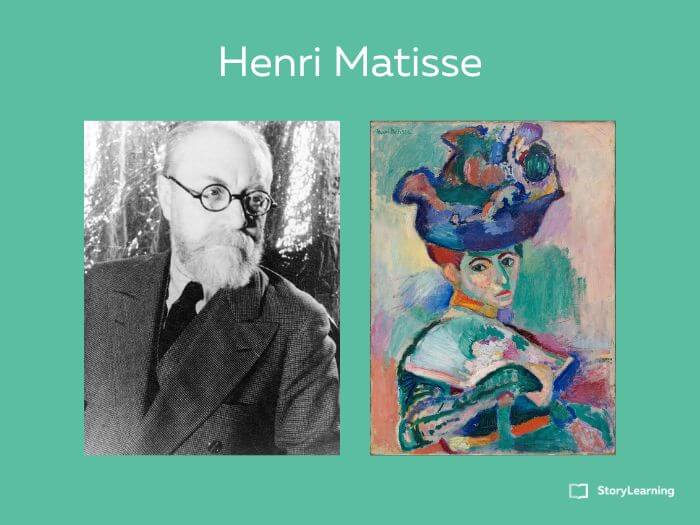
Known as one of the leaders of Fauvism alongside André Derain, Matisse helped usher in changes to painting and visual art that set the scene for the first half of the 20th century and beyond.
His Fauvism movement was short-lived, lasting only from around 1905 to 1908. But the exaggerated brush strokes and vibrant colours that characterised it would influence many artists who followed.
His style underwent several distinct changes throughout his career, and following the Fauvism period and the end of the First World War, his style softened before becoming more simplified in the latter part of his career.
Many of his works are instantly recognisable, even if you have little artistic knowledge and aren’t aware of the name of the artist who created them.
16. Georges Braque (1882-1963)
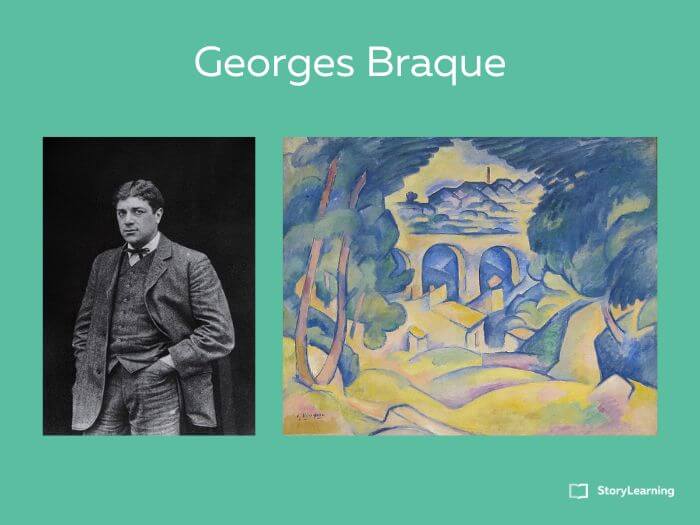
Initially an Impressionist, Braque was heavily influenced by the work of Matisse and other Fauvist artists, and this led to him making his own contributions to Fauvism.
In the years after the Fauvist movement had effectively come to an end, Braque worked with famous Spanish artist Pablo Picasso. Together, they began producing what can be called proto-Cubist works that would eventually give birth to the Cubist movement.
Braque’s main influence was Cézanne, and he was intent on further exploring Cézanne’s ideas about perspective in a Cubist style.
His style changed over the years, and the more abstract tendencies of his Cubist work softened towards the end of his life.
Although he is probably less well-known outside of art circles than Picasso, Braque nevertheless made a significant contribution to modern art during his career.
Many Other Famous French Artists To Discover
In compiling this list, far more artists have been left out than could possibly have been included. And I’m also aware that no female artists have made the list, simply because until recently, the art world was very much a male-dominated domain.
The 19th century is particularly well represented here, with artists from that period comprising half of my entries. This is because that century in particular was an extremely important period in French art when many of the most famous French artists were active.
Artists who are not on my list include the influential Impressionist and post-Impressionist Camille Pissarro, an artist I mentioned without affording him a full entry. The Impressionist Edgar Degas would certainly also have been included here with more space.
More recently, André Breton, one of the founders of Surrealism, 20th-century painter and sculptor Jean Dubuffet, pop artist Yves Klein and Op Art leader Victor Vasarely are among many, many other French artists worthy of note.
To this list can be added French-American painter and sculptor Niki de Saint Phalle, sculptor César Baldaccini, painter and sculptor Pierre Soulages and architect and designer Philippe Starck, all outstanding artists in their fields.
So in short, if you're interested in the art of France, my advice is to take this list simply as a starting point. And then to go out and explore the many other artists that France has produced and continues to produce to this day.

Olly Richards
Creator of the StoryLearning® Method
Olly Richards is a renowned polyglot and language learning expert with over 15 years of experience teaching millions through his innovative StoryLearning® method. He is the creator of StoryLearning, one of the world's largest language learning blogs with 500,000+ monthly readers.
Olly has authored 30+ language learning books and courses, including the bestselling "Short Stories" series published by Teach Yourself.
When not developing new teaching methods, Richards practices what he preaches—he speaks 8 languages fluently and continues learning new ones through his own methodology.
